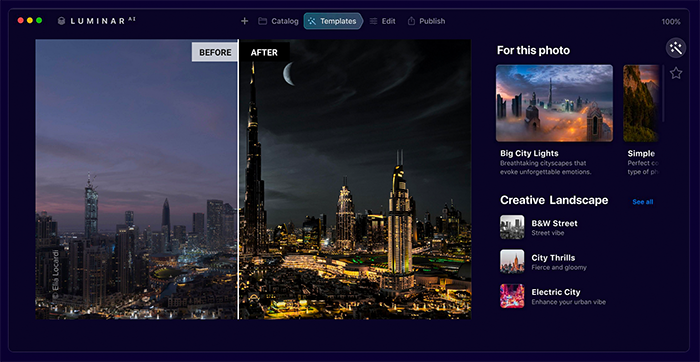DxO launches PhotoLab 4. Features DxO DeepPRIME, a revolutionary demosaicing and denoising technology based on artificial intelligence and trained with deep learning.
DxO announced the totally new PhotoLab (Click here to read all info and get the 30% discount). You can also download the free trial (Click here) if you want to test it before to buy it!
This is the Press text:
DxO PhotoLab 4 features DxO DeepPRIME, a revolutionary demosaicing and denoising technology based on artificial intelligence and trained with deep learning.
DxO PhotoLab 4 has also added a new dynamic interface system called DxO Smart Workspace, enriched its photo library with a batch renaming feature, and created an even simpler workflow by adding a new and exclusive editing history tool called DxO Advanced History and the ability to selectively copy and paste specific settings. Lastly, the new DxO Instant Watermarking feature lets users sign their photos by adding a watermark directly to the image.
Key new features:
DxO DeepPrime: a revolutionary demosaicing and denoising technology based on artificial intelligence and trained with deep learning.
DxO Smart Workspace: a new dynamic interface with a simpler workflow with batch renaming.
DxO Advanced History: a new and exclusive editing history tool to scroll back to different moments in the editing process.
Selective Copy Paste: to synchronise the settings of several similar images by applying individual edits from one photo to another.
Instant Watermaking: to add watermarks directly to your photos.
During launching we have a special promo offer -30% on new purchases and upgrades (from 21/10/2020 to 19/11/2020).
DxO PhotoLab 4 ESSENTIAL Edition: $99.99 instead of $129
DxO PhotoLab 4 ELITE Edition: $149.99 instead of $199






